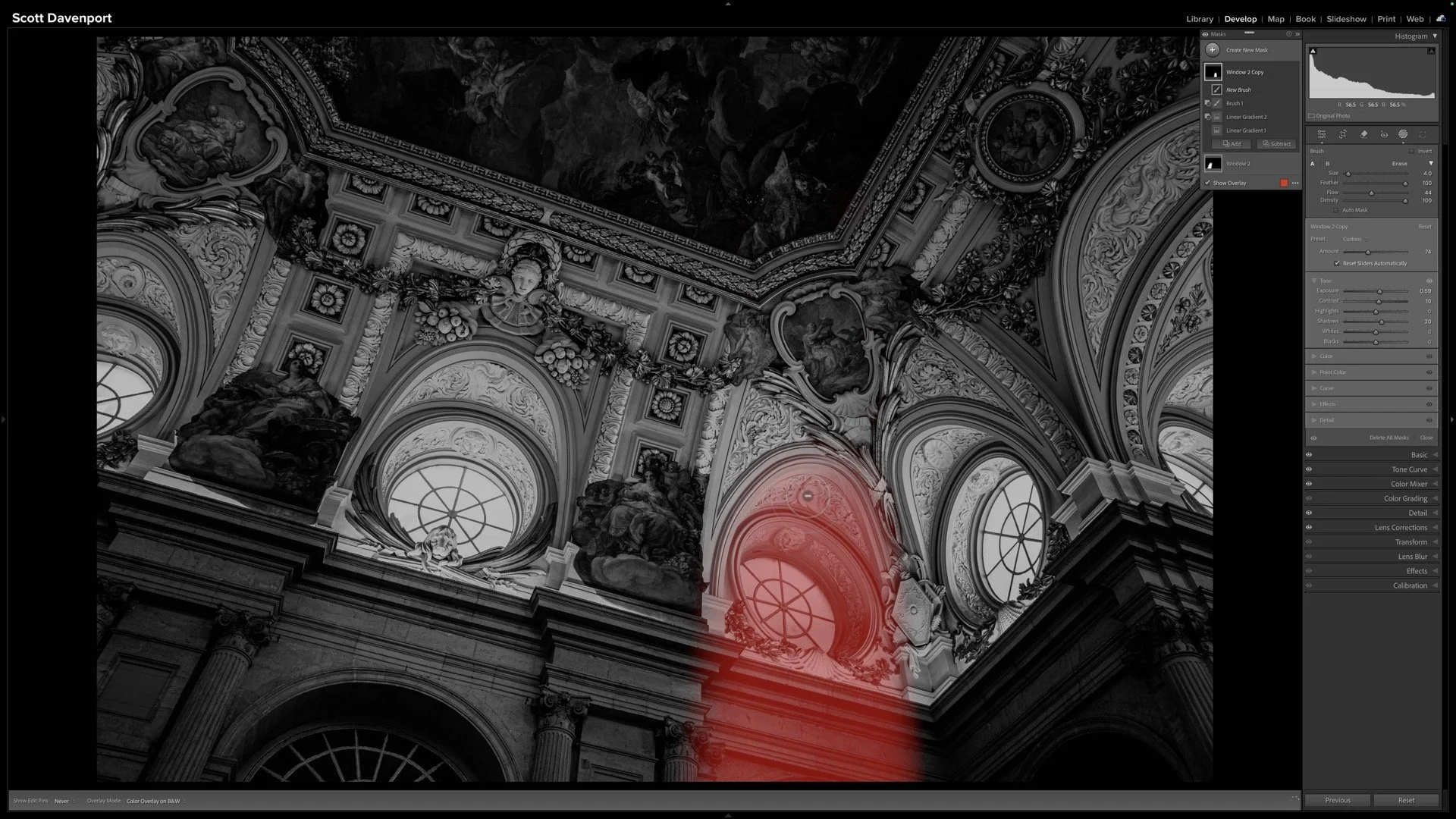Get Rid Of The Purple And Green Fringe In Lightroom
Color fringing happens in photography. Those purple and green halos at the edges of certain subjects in a frame that distract and detract from an otherwise good image. The technical term for this is chromatic aberration. I’ll briefly explain what chromatic aberration is and some steps you can take in the field to reduce it. Yet best of all, how you can correct it in Lightroom.
This photo suffers from chromatic aberration. Notice the purple fringing on the rocks on the left edge and the green fringing on the right. The “V” shape near the hand cursor also shows both purple and green fringing.
What Is Chromatic Aberration?
In brief, chromatic aberration happens when the wavelengths of the different colors of light don’t properly realign at your camera’s sensor. Recall light is a combination of many different wavelengths, or colors. As light enters your lens, the wavelengths are bent at differing angles, separating the wavelengths. The glass in your lens acts like a prism of sorts, splitting the light into its component wavelengths. If you’re old enough to remember Dark Side Of The Moon by Pink Floyd, you know exactly what I’m talking about. :)
Lens manufacturers know about this problem and a lens typically has many different glass elements inside the lens to adjust and redirect light as it passes through your lens to your camera’s sensor. The goal is to correct the path of each wavelength of light, so all strike the sensor at the same point. When that happens, you capture crisp, clear photographs. When the wavelengths don’t quite align, the result is chromatic aberration or color fringing.
Can I Avoid Color Fringing?
All lenses have some form of chromatic aberration, so fringing cannot be avoided entirely, even with pro-grade lenses. There are a few things you can do to reduce the severity of chromatic aberration when capturing photos.
I loved the wide-angle on this lens and was my go-to on my crop sensor Nikon. I also knew I’d need to manage color fringing.
Get to know your lenses. As I said, all lenses have some level of color fringing. Some lenses have more chromatic aberration than others. Also, fringing tends to be more pronounced in zoom lenses vs. primes. For zoom lenses, the extreme focal lengths (widest or longest) often experience more chromatic aberration than mid-range focal lengths.
Frame subjects away from the edges. Chromatic aberration tends to be more pronounced toward the edges of a frame and less so in the center. It’s often a relationship of the curvature of the lenses within the barrel. Fortunately, the compositional guidelines we follow in photography generally don’t push subjects to the edges of a frame. Secondary subjects at the edges may be a problem. Options in the field include zooming out a little or simply taking one step back and trimming away the excess pixels in post.
Avoid high-contrast scenes. Fringing tends to be more pronounced at high contrast edges, notably dark edges against bright backgrounds. For landscape photographers, this is often an unavoidable situation. Yet if you have the option to reframe or recompose to reduce high contrast areas, it is a step you can take.
Capture in RAW. With a RAW image, you have more latitude to correct chromatic aberration in post-processing. And I’ll show you how in this article.
You’ll no doubt notice that the only thing in this list that’s an easy change is capturing in RAW. All of the others are situational and the demands of the scene may not allow you to change a focal length, swap a lens, or recompose. When that happens (and it happens to me often), no problem. Capture that frame in RAW and be ready to handle the correction in post-processing.
How Do I Correct Chromatic Aberration?
The Lens Corrections panel in Lightroom has all the controls you need to fight the fringe and get rid of chromatic aberration. There are two methods to compensate for and fix chromatic aberration, and I recommend using them together for the most accurate correction.
Method 1 - the Remove Chromatic Aberration checkbox. Open the Lens Corrections panel and check the Remove Chromatic Aberration checkbox. Yes, it’s that simple. Lightroom analyzes the photo and automatically reduces or removes the purple and green fringing it finds. Sometimes, that is all you need. Zoom in at 100% or higher and check the results. If you’re happy, you’re good to go!
Before: There is some serious purple and green fringing along the edges fo the rocks.
After: A massive difference! Not only is the fringing greatly reduces, the darker shading on the rock edge is handled.
Method 2 - The Manual Controls. Other times, the checkbox alone won’t get you an acceptable results. Switch over to the Manual section of Lens Corrections. You can adjust the fringe amounts and hues manually. However, I recommend using the eyedropper. It’s a faster workflow and Lightroom will set the sliders for you based on a color choice. The steps are simple:
Zoom in at 200% or more. The image will be pixelated, yet this will allow you to select a more precise fringe color.
Switch to the Manual section of the Lens Corrections panel.
Choose the eyedropper.
Hover over the fringe area. The eyedropper turns purple or green when hovering over a fringe color that can be corrected.
Use the crosshairs in the loupe to precisely select a color.
Click the eyedropper and Lightroom sets the Amount and Hue slider for the appropriate fringe color.
You can do this for both the green and purple fringes. If you’re unable to select a particular color fringe with the eyedropper - that’s good! It means the checkbox did a great job. In this example, the eyedropper did not detect a green fringe color for further correction.
Manual controls: Use the eyedropper to pick a purple or green fringe color. Lightroom automatically sets the Amount and Hue sliders based on your selection.
Manual controls: Refine the Amount and Hue Range. It is best to zoom in at 200% or more for the most accurate adjustments.
After selecting a color with the eyedropper, you can fine tune the sliders as necessary. Sometimes an adjustment in the hue is helpful. The hue sliders are a range. You can adjust the left and right controls to widen or narrow the range of hues affected. Pro tip! Click and drag in between the hue control points to slide the hue range up or down.
My last tip … resist the urge to go manual all the time. Why? The Remove Chromatic Aberration checkbox does a good job at handling many fringe corrections. Also, the checkbox corrects the tonality along high contrast edges, correcting for brightness or darkness. Use both the checkbox and the manual controls together for the most accurate correction for chromatic aberration.
The Grandstand In Death Valley
Contact Scott to commission a print or license this image.











